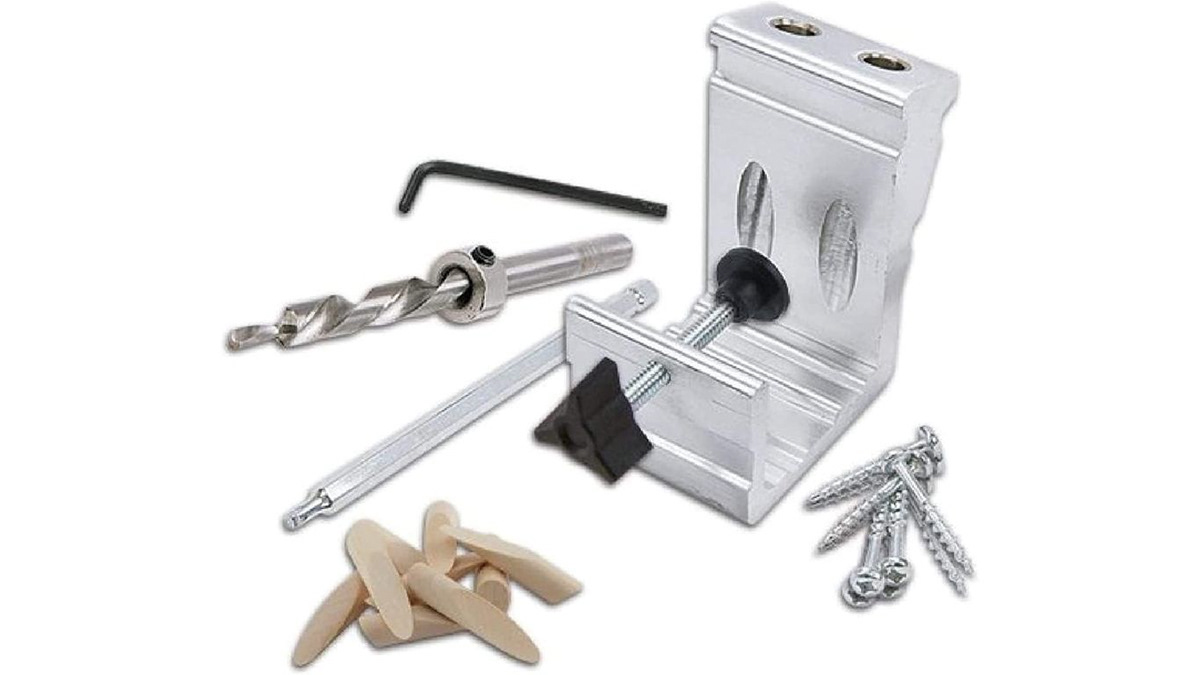Mastering Woodworking Precision: A Guide to Dowel Jigs
Are you looking to elevate your woodworking game to the next level? Meet your new best friend: the dowel jig. This unassuming tool is a game-changer when it comes to creating precise joints in your woodworking projects. Whether you're a seasoned craftsman or just starting out, a dowel jig can significantly enhance the quality and durability of your creations.

What is a Dowel Jig?
At its core, a dowel jig is a device used to guide the drilling of perfectly aligned holes for dowel joints. Dowel joints are a popular choice in woodworking for their strength, simplicity, and clean appearance. The jig ensures that the holes drilled in two separate pieces of wood align perfectly, allowing for a snug fit and a strong bond when glue is applied.
At its core, a dowel jig is a device used to guide the drilling of perfectly aligned holes for dowel joints. Dowel joints are a popular choice in woodworking for their strength, simplicity, and clean appearance. The jig ensures that the holes drilled in two separate pieces of wood align perfectly, allowing for a snug fit and a strong bond when glue is applied.
Why Use a Dowel Jig?
Precision: One of the primary benefits of using a dowel jig is its ability to deliver precise results consistently. The jig ensures that the holes drilled in each piece of wood are perfectly aligned, eliminating the guesswork and reducing the likelihood of mistakes.
Precision: One of the primary benefits of using a dowel jig is its ability to deliver precise results consistently. The jig ensures that the holes drilled in each piece of wood are perfectly aligned, eliminating the guesswork and reducing the likelihood of mistakes.
Strength: Dowel joints are renowned for their strength, making them ideal for joining pieces of wood together. Unlike some other joint types, such as screws or nails, dowel joints distribute stress evenly across the joint, resulting in a robust connection that can withstand significant force.
Aesthetics: Dowel joints create clean, seamless connections between pieces of wood, enhancing the overall appearance of your project. With no visible fasteners, dowel joints offer a sleek and professional finish that's sure to impress.
Versatility: Dowel jigs come in various shapes and sizes, allowing you to create a wide range of joint configurations to suit your specific needs. Whether you're joining boards edge-to-edge, end-to-edge, or at a right angle, there's a dowel jig out there to help you get the job done.
How to Use a Dowel Jig
Using a dowel jig is relatively straightforward, but it does require careful attention to detail to ensure optimal results. Here's a basic overview of the process:
Using a dowel jig is relatively straightforward, but it does require careful attention to detail to ensure optimal results. Here's a basic overview of the process:
Prepare Your Materials: Start by preparing the pieces of wood you wish to join. Ensure that they are cut to the correct size and shape and that any surfaces to be joined are flat and square.
Set Up the Jig: Adjust the settings on your dowel jig according to the specifications of your project. This typically involves setting the spacing between dowel holes and adjusting the depth of the drill bit.
Clamp the Jig in Place: Secure the dowel jig to the workpiece using clamps to prevent it from moving during drilling. Ensure that the jig is positioned correctly and that it is aligned with the edge of the wood.
Drill the Holes: Using a drill fitted with the appropriate-sized drill bit, carefully drill holes through the guide holes in the dowel jig. Take care to drill straight and to the correct depth to ensure a proper fit for the dowels.
Insert the Dowels: Apply glue to the holes in one of the pieces of wood, then insert dowels into the holes. Carefully align the second piece of wood with the dowels and press the two pieces together firmly.
Allow the Glue to Cure: Once the pieces are joined, allow the glue to cure fully according to the manufacturer's instructions before applying any further finishing touches to your project.
In Conclusion
Whether you're constructing furniture, cabinetry, or smaller woodworking projects, a dowel jig is an invaluable tool that can help you achieve precise, durable joints with ease. Invest in a quality dowel jig, master the technique, and unlock a world of possibilities in your woodworking endeavors. Happy building!
Whether you're constructing furniture, cabinetry, or smaller woodworking projects, a dowel jig is an invaluable tool that can help you achieve precise, durable joints with ease. Invest in a quality dowel jig, master the technique, and unlock a world of possibilities in your woodworking endeavors. Happy building!
